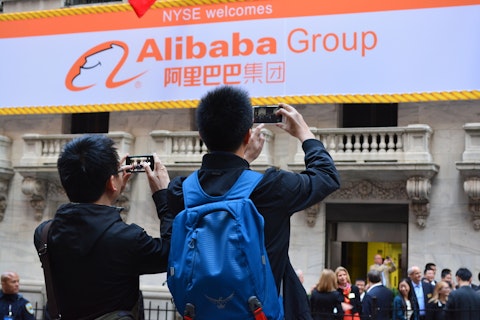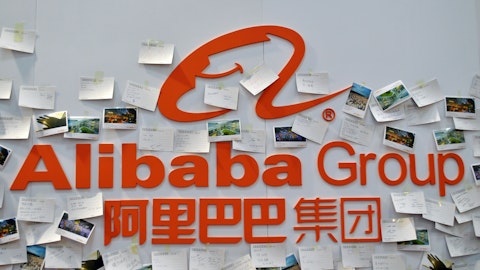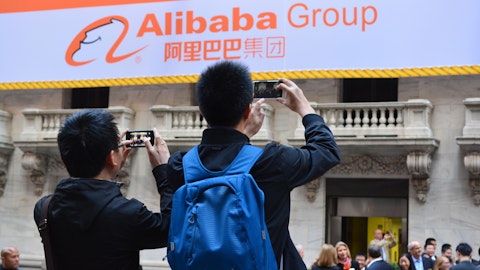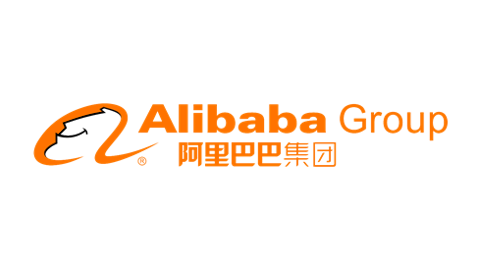Rowan Street Capital recently released its Q3 2020 Investor Letter, a copy of which you can download here. The Fund posted a return of 14.9% for the quarter (gross), outperforming its benchmark, the S&P 500 Index which returned 9.1% in the same quarter. You should check out Rowan Street Capital’s top 5 stock picks for investors to buy right now, which could be the biggest winners of this year.
In the said letter, Rowan Street Capital highlighted a few stocks and Alibaba Group Holding Limited (NYSE:BABA) is one of them. Alibaba Group Holding Limited (NYSE:BABA) is a Chinese e-commerce company. Year-to-date, Alibaba Group Holding Limited (NYSE:BABA) stock gained 28% and on November 20th it had a closing price of $270.74. Here is what Rowan Street Capital said:
“We first initiated a position in Alibaba back in May of 2018, and continued adding to our position as the stock continued slipping for the rest of the year as the company fell victim to a broader slowdown in Chinese economy as well as trade tensions with the U.S. Additionally, an earnings miss and a guidance cut, along with the broader market sell-off in December of 2018 cooled off the stock to $130 per share. At that price, we thought the stock was a ‘steal’ and added aggressively, building out our position to ~18% of the overall portfolio (please see below). Only two years following our investment, the stock has doubled in price as compared to the S&P 500 advance of +27% over the same time period.
Our initial interest in the company was sparked by the book “Alibaba: The House That Jack Ma Built”, which we had a pleasure of reading back in 2016. We had since followed the company for about two years before our initial investment. Patience is in our DNA!
The book refers to the “Iron Triangle” (E-commerce Edge, Logistics Edge and Finance Edge) as a key factor in making Alibaba such a dominant player in China’s e-commerce market. But it is the charisma of the company’s founder — his “Jack Magic” — that bound together the people and capital who would build on these foundations.
Alibaba’s integrated ecosystem connects and controls the whole value chain of branding, broadcasting, sales conversion and sharing. That’s very different from how it works in the U.S., where internet giants such as Amazon, Facebook and Alphabet are individually dominant in certain parts of the value chain, but not in the complete manner that Alibaba has achieved. None has an ecosystem that connects the entire marketing and commerce value chain from branding, broadcasting and sales conversion. Alibaba connects the entire value chain.
Demographics and Urbanization
China’s $5.5 trillion domestic consumption market is driven by two massive demographic forces:
(1) The emergence of the middle class of over 300 million people living in large cities. This affluent middle-class population is almost as large as the entire U.S. population and their consumption needs and wants are approaching developed market levels. There is a strong desire of these consumers to upgrade the quality of products they buy, especially the pursuit of brands and imported products. Alibaba’s T-mall platform benefits tremendously from this ongoing trend, and we believe it will continue to be the leading choice for consumers looking for quality and consumption upgrade.
(2) The second massive demographic trend is the rise of urbanization, affecting third, fourth and fifth tier cities. Other than the major metropolitan areas like Shanghai, Beijing and Shenzhen, China has more than 150 cities with a population of at least 1 million people. In aggregate, these lower-tier cities and the surrounding townships have more than 500 million people with a consumption economy of $2.3 trillion. What is happening is the lower-tier cities are urbanizing very fast, with a projected 300 million people that will move from rural areas into these cities over the next 10 years. The economy of these smaller cities will grow faster than the major metropolitan areas. We’ve seen projections that retail consumption from the lower-tier cities and townships will triple from $2.3 trillion today to nearly $7 trillion by the year 2030. That is a compounded annual growth of more than 10% over a long period of time.
We believe that Alibaba is uniquely positioned with a capability to capture opportunities of both the growing middle class in metropolitan areas and urbanization of lower-tier cities.
Rapid Pace of Digitization
Over the past 10 years, digitization of the Chinese economy has been driven by smartphones. Because of the convenient and always-connected nature of mobile devices, more and more users are spending more and more time connected to the Internet. This is giving the digital service providers like Alibaba a great feedback loop to understand user trends so that they can rapidly and continuously improve their services. Under all-in mobile strategy, Alibaba has become the leading player in digitizing commerce. They have developed the most sophisticated AI algorithms to serve consumers on its platform, which results in ever-improving user experience as well as increasing monetization opportunities.
Over the next 10 years, digitization of the economy will be further accelerated by the advent of 5G connection and proliferation of IoT (Internet of Things) devices. This will have farreaching implications for all industries and processes, including public services, manufacturing, supply chain distribution, product development and marketing. By developing these essential technologies of a more digitized world, such as data technology, cloud infrastructure and machine intelligence, Alibaba is very well positioned to help businesses succeed through its new infrastructure for commerce.
Result Since IPO
Alibaba went public in 2014, priced at $68, but the stock first began trading at $93 (9/19/2014). Since then the stock is up 230% in 6 years or 22% per year. This is a very plausible result as compared to the S&P 500. But in comparison, Amazon did an astounding 885% over the same time period or 46% per year (see below).
What happened? Did Amazon grow that much faster than Alibaba?
Nope. As you can see from the table above, revenues at BABA grew 9x since IPO in 2014 vs. only 3.8x for Amazon over the same time period.
So why such a huge difference in stock performance? A few factors are at play here. But a huge one is paying too much at IPO, even for an outstanding company like Alibaba. There was a ton of hype around Alibaba’s IPO and investors were paying 25x revenues at the time. Since then the multiple had contracted to ~8x revenues (2020E) while Amazon P/S multiple has increased by 2.5x from 2x revenues to 5x.
One of the reasons why we think Amazon’s multiple has expanded can be explained by its gross margin expansion (from 29% in 2014 to low 40s% recently). Meanwhile, Alibaba’s gross margins have contracted quite a bit from 70% in 2014 to ~45% recently. Alibaba has always been a digital marketplace, which does not own the inventory of the merchandise sold, and that merely connects buyers and sellers together. On the other hand, Amazon is a re-seller that owns the inventory and supply chain of its merchandise and sells directly to the customer. Over the past several years, Alibaba’s revenue mix shifted towards direct sales businesses such as T-mall and New Retail, which have increased the cost of inventory, while Amazon has made leaps towards connecting buyers and sellers directly. Amazon Cloud (AWS) has also helped boost its overall margins while AliCloud is still very early in the ballgame and not yet profitable.
Another reason for BABA’s multiple contraction is the trade war and ongoing political cloud that still casts over Chinese companies while U.S. tech companies get a very healthy premium.
Even though Alibaba’s stock has nearly doubled from our cost basis, we continue to be optimistic on its long-term prospects. Despite the uncertainties in macroeconomics and geopolitical environment, there is one thing we can be certain of — the world is moving towards digital-first and digital everything. In the past two decades, Alibaba has developed a comprehensive infrastructure and capabilities built on digital technology for business, financial services, logistics, cloud computing, and big data to prepare for this new era. Alibaba’s management believes that their infrastructure and capabilities will play an important role in enabling all industries to embrace digital transformation and the customers to embrace a digital lifestyle.
Recent Milestones
Alibaba has reached some impressive milestones this year. Despite COVID-19, they have achieved $1 trillion GMV (Gross Merchandise Value), which was a strategic goal set 5 years ago. Their scale has now reached 1/6 of China’s total retail sales ($6 trillion). User growth in China has reached 780 million – one out of every two Chinese are now buying on Alibaba platform. They have also been very successful in penetrating Lower Tier cities in China as 70% of user base growth came from lower tier cities.
Management’s long-term vision remains very ambitious (just like the $1 trillion GMV goal has been in the past): 2 billion global consumers, 100 million jobs created on its platform and 10 million profitable SMEs (small and medium-sized enterprises) enabled by Alibaba’s digital ecosystem. We would not bet against them considering their track record.
AliCloud
We are also very excited about Alibaba’s Cloud business. The China cloud market is going to be somewhere in the $15-20 billion total size range, and the U.S. market is currently about 8x of that. So, the China market is still in its very early stages. Management expects, based on what they have seen from their customers as well as observing the entire market growth, that China’s cloud market is going to be a much faster-growing market than the U.S. market.
According to IDC (July 2020), Alibaba Cloud was the largest public cloud service provider in China, as measured by market share for IaaS (Infrastructure as a Service) as well as PaaS (Platform as a Service) for the quarter ended March 31, 2020. If we compare AliCloud (~$1.8B in revenues) to AWS ($10.8b in revenues), the former is still about 6x smaller than the latter. However, AliCloud is currently growing at 2x the rate of AWS (60% vs 29%). AWS business is very profitable, earning ~30% operating margins, whereas AliCloud is in the heavy investment mode and is still losing money. Management expects AliCloud to turn potable in 2021 fiscal year. As its scale grows, we expect AliCloud to be increasingly profitable, potentially approaching its core commerce operating margins over time. We think that Mr. Market does not currently appreciate the long-term potential of the AliCloud business.
Valuation Framework
Alibaba recently had its investor day. Management discussed how the current market value of the company is only reflecting the value of their core commerce businesses and not giving any value to other businesses with very high growth. As you can see below, their marketplace-based core commerce business generated $29 billion in adjusted EBITA over the past 12 months. That business is still growing at 35%+, which is astounding for a company of Alibaba’s size. If we were to assign a 25x multiple, core commerce would be valued at $725 billion. Now, what is their Cloud Computing Business worth of which we wrote above? What is their stake in the Ant Group worth (currently valued at $313 billion) that will soon go public on the Hong Kong exchange? How about all their strategic investments that are currently valued at $45 billion? Digital Media and Entertainment business?
We believe the odds are still in our favor to earn long-term double-digit compounded returns from our Alibaba investment even from current market levels.”

Christopher Penler / Shutterstock.com
Last month, we published an article revealing that with its octopus style strategy of having their ventures span multiple industries, Alibaba Group Holding Limited (NYSE:BABA) is poised to have some big winners over the next decade.
In Q2 2020, the number of bullish hedge fund positions on Alibaba Group Holding Limited (NYSE:BABA) stock decreased by about 8% from the previous quarter (see the chart here), so a number of other hedge fund managers don’t believe in Alibaba’s growth potential. Our calculations showed that Alibaba Group Holding Limited (NYSE:BABA) is ranked #4 among the 30 most popular stocks among hedge funds.
The top 10 stocks among hedge funds returned 185% since the end of 2014 and outperformed the S&P 500 Index ETFs by more than 109 percentage points. We know it sounds unbelievable. You have been dismissing our articles about top hedge fund stocks mostly because you were fed biased information by other media outlets about hedge funds’ poor performance. You could have doubled the size of your nest egg by investing in the top hedge fund stocks instead of dumb S&P 500 ETFs. Below you can watch our video about the top 5 hedge fund stocks right now. All of these stocks had positive returns in 2020.
Video: Top 5 Stocks Among Hedge Funds
At Insider Monkey we scour multiple sources to uncover the next great investment idea. For example, Federal Reserve has been creating trillions of dollars electronically to keep the interest rates near zero. We believe this will lead to inflation and boost real estate prices. So, we recommended this real estate stock to our monthly premium newsletter subscribers. We go through lists like the 10 most profitable companies in the world to pick the best large-cap stocks to buy. Even though we recommend positions in only a tiny fraction of the companies we analyze, we check out as many stocks as we can. We read hedge fund investor letters and listen to stock pitches at hedge fund conferences. You can subscribe to our free daily newsletter on our website:
Disclosure: None. This article is originally published at Insider Monkey.





